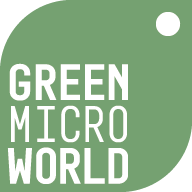revolutionary approach to purify and safeguard our water resources
In the realm of water treatment, the use of microbes has emerged as a revolutionary approach to purify and safeguard our water resources. Microorganisms, despite their minuscule size, play a pivotal role in maintaining water quality, ensuring public health, and promoting sustainable practices. By harnessing the power of these microscopic organisms, water treatment professionals are transforming the way we harvest and treat water, leading to cleaner and safer water supplies.
Microbes are instrumental in various water treatment processes, particularly in the realm of biological filtration. Through techniques such as activated sludge and biofiltration, specific microbial communities work diligently to break down organic matter, remove harmful contaminants, and improve the overall quality of water. These microorganisms act as natural purifiers, efficiently transforming pollutants into harmless byproducts, making water safe for consumption and other uses.
Furthermore, microbes are employed in the process of bioremediation, which focuses on the removal or degradation of pollutants from water bodies. Certain microorganisms have the ability to metabolize and break down various contaminants, including organic compounds, heavy metals, and nutrients. By utilizing these microbial remediation techniques, water treatment professionals can target specific pollutants and restore water bodies to their natural, pristine condition.
Microbes also play a crucial role in the control and prevention of harmful algal blooms (HABs), a persistent issue in many water systems. HABs, caused by excessive growth of certain algae species, can release toxins that pose a threat to human health and aquatic ecosystems. Through the application of microbial-based technologies, such as algicidal bacteria and competitive exclusion methods, water treatment professionals can mitigate HABs and prevent their recurrence, safeguarding water supplies and aquatic life.
In addition to treatment processes, microbes are also involved in the monitoring and assessment of water quality. Microbial indicators, such as fecal coliforms and E. coli, are commonly used to detect the presence of pathogens in water sources. These indicators serve as a warning system, allowing water treatment professionals to take necessary actions to ensure the safety and potability of water supplies.
In conclusion, the integration of microbes in the harvest practices of the water treatment industry represents a transformative approach to ensuring clean and safe water resources. By harnessing the power of these microscopic organisms, water treatment professionals can efficiently remove contaminants, prevent harmful algal blooms, and safeguard public health. The utilization of microbial-based technologies in water treatment offers promising solutions for sustainable water management and conservation. As microbial advancements continue to evolve, the water treatment industry stands poised to provide reliable access to clean water for communities worldwide.
REQUIRE MORE DETAILS?
BENEFITS
The microbes help break down organic matter and excess nutrients in the pond, reducing algae growth and improving water clarity.
The microbes can help break down organic matter, which in turn can increase oxygen levels in the water. This can benefit fish and other aquatic life in the pond.
The microbes can help break down organic matter and convert it into nutrients that can be used by plants in and around the pond, promoting healthy growth.
The microbes can help break down organic matter that can produce unpleasant odors, reducing the smell of the pond.


